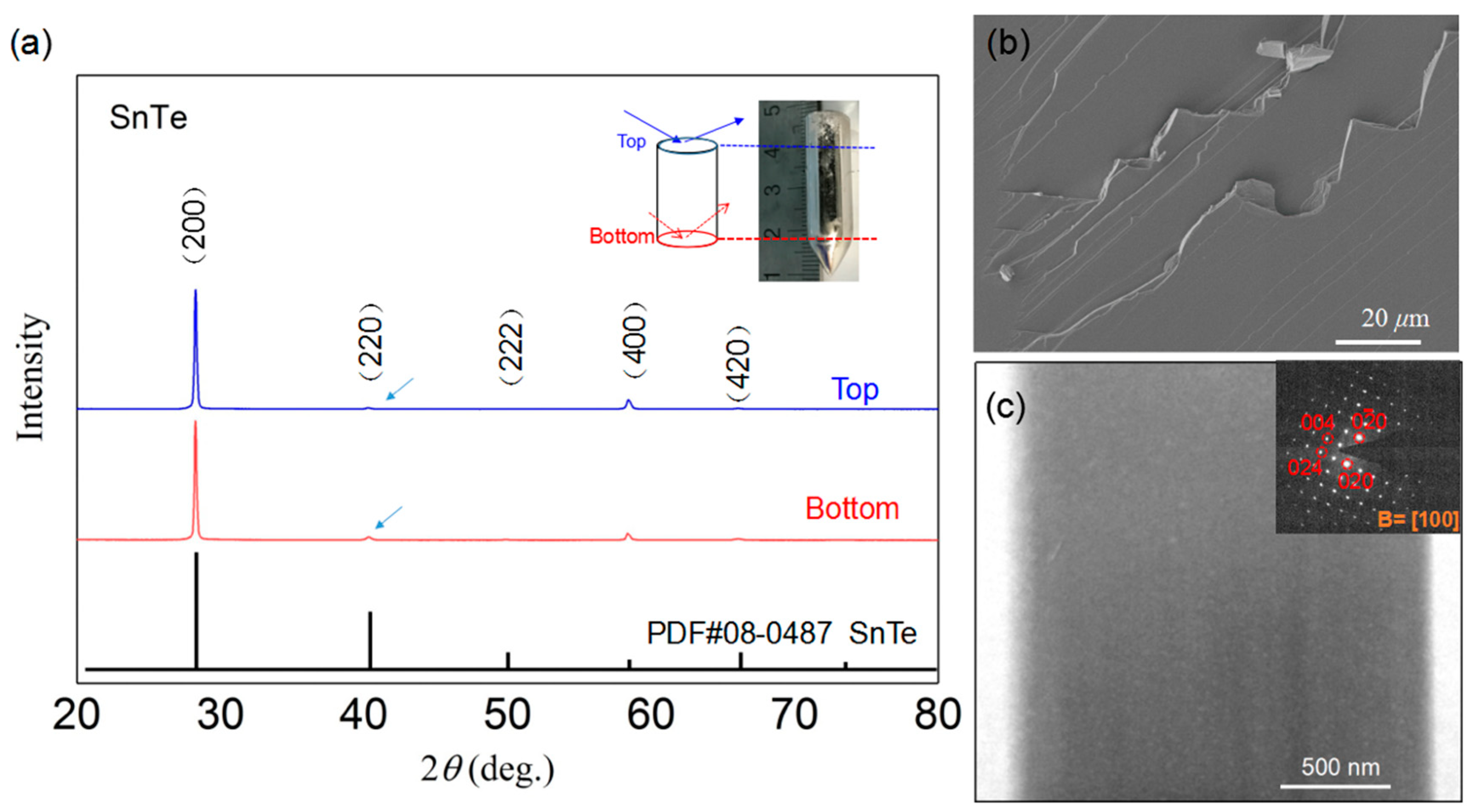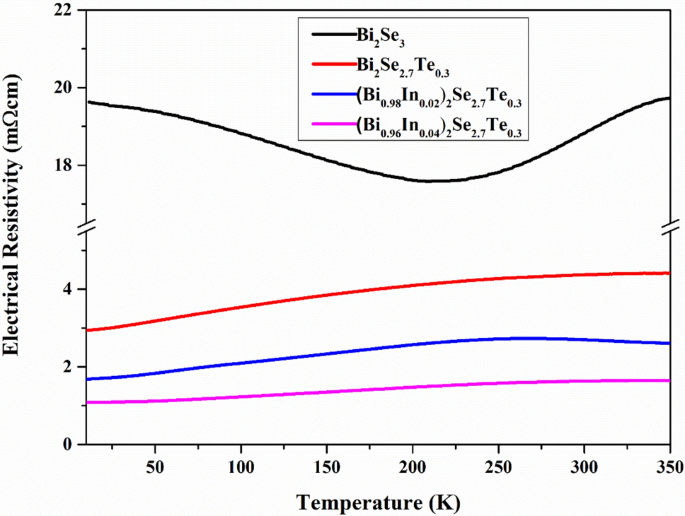It is often alloyed with tin to make lead tin telluride. Therefore by the continuous substitution of Tellurium Seebeck coefficient becomes negative.

Thermoelectric Properties Of Ito Films Deposited Under A Pure Argon Download Scientific Diagram
Request PDF Thermoelectric Properties of Bismuth-Doped Tin Telluride SnTeBi X-ray researches are carries out and the thermoelectric coefficient σ and the specific conductivity α are.

Tin telluride electrical conductivity. Department of Energys Office of Scientific and Technical Information. Six years ago a research team from the USA discovered that tin selenide above 500 degrees Celsius can convert about 20 per cent of heat into electrical energy. Department of Energy Office of Scientific and Technical Information.
Shimoji journalJournal of The Less Common Metals year1980 volume70. It is observed that there is random variation in the Seebeck coefficient of doped samples which could be due to the unobvious grain growth of. Together they form a unique fingerprint.
Here this alloy doped with manganese Pb096yMn004SnyTe was prepared for different amounts of tin. Leadtintelluride is a well-known thermoelectric material in the temperature range 350750 K. It is a IV-VI narrow band gap semiconductor material.
Lead tin telluride. Made available by US. To achieve high ZT materials should possess a large Seebeck coefficient high electrical conductivity and low thermal conductivity simultaneously.
The carrier concentration N p of SnTe reduces from 45 10 20 cm 3 to 21 10 20 cm 3 on self compensation of Sn vacancies as established in the previous report 14 21. This will lead to the mutual bonding of -Se-Bi-Te-Bi-Se-. Narrow band gap semiconductor tin telluride SnTe was synthesized by mechanical alloying and its film was deposited on glass substrates by the economicall.
X-ray diffraction showed a decrease of the lattice constant with. The electrical conductivity related to thermal activation of conduction by Mott and Davis equation. The inclusions were not found to reduce the lattice thermal conductivity at elevated temperatures.
Lead tin telluride is p-type semiconductor at 300 K. Electrical conductivity σ hole concentration p Seebeck coefficient α and thermal conductivity κ were measured in the temperature range of 300-700 K. Lead telluride is a compound of lead and tellurium that occurs naturally in the mineral altaite.
The dark electrical conductivity and activation energy of the film were measured in temperature range 300380 K. This means that oxides such as antimony doped tin oxide SnO 2Sb which have slightly lower values of electrical conductivity 10 3 S cm 1 depending on the fabrication technique are more. The experimental electrical conductivity and Seebeck coefficient data at elevated temperatures were found to be within 10 of what would be expected for material without inclusions.
The crystals show hexagonal crystal structure with R3 m space group. Hole concentration at 300 K changed from 311024 to. Electrical studies of the films.
The hole concentration increases as the tin content is increased resulting in an increase in electrical conductivity. 14 σ T σ o exp E dc k B T where E dc represents the activation energy k B is Boltzmann constant and σ o is the pre-exponential factor. As a result electrical conductivity increases gradually among the samples 55 56.
Indium telluride thin films are prepared by thermal evaporation technique onto glass substrate held at room temperature at deposition pressure 210¹ Pa. Dive into the research topics of Effect of tin content on thermoelectric properties of p-type lead tin telluride. The electrical conductivity and the phase diagram of the molten tin-tellurium system articleKurosawa1980TheEC titleThe electrical conductivity and the phase diagram of the molten tin-tellurium system authorS.
Tin telluride SnTe has the same rock salt structure and similar band. It is a narrow gap semiconductor that has low thermal conductivity and hence it can be used as a thermoelectric material. The room temperature electrical conductivity decreases from 6600 Scm 1 to 1970 Scm 1 as x increases from 0 to 4 mol in Sn 104-3x Ca 2x In x Te.
Pb 1-x Sn x Te single crystals with various Sn contents x were prepared by the Bridgman method. Hall Effect measurement indicates that the film has p-type electrical conductivity. For composition range x 0 to 01 electrical conductivity decreases with increase in temperature up to 500 K and increases beyond 500 K.
In the current work growth and thermoelectric characterization of tin and selenium co-doped single crystal bismuth telluride have been carried out in the range of temperature 10400 K. Therefore the activation energy of conduction can be calculated using the Mott formula 51. Where S σ κ el κ L and T are the Seebeck coefficient electrical conductivity electronic thermal conductivity lattice thermal conductivity and absolute temperature respectively 123.
Electrical conductivity σ hole concentration p Seebeck coefficient α and thermal conductivity κ were measured in the temperature range of 300-700 K. Lead tin telluride also referred to as PbSnTe or Pb 1x Sn x Te is a ternary alloy of lead tin and tellurium generally made by alloying either tin into lead telluride or lead into tin telluride. All samples showed p-type conduction at 300 K.

Seebeck Coefficients Of Snse 1ax Te X X 0 0 05 0 1 0 15 0 2 At Download Scientific Diagram

Reduction In Thermal Conductivity And Electrical Resistivity Of Indium And Tellurium Co Doped Bismuth Selenide Thermoelectric System Springerlink
Tidak ada komentar